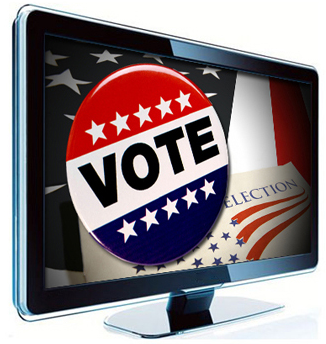John Perilli: On Going Negative
Wednesday, July 30, 2014
Negative advertising might be dirty, but clean campaigns aren’t necessarily informative, believes John Perilli.
With the primary only six weeks away, we’ve entering the phase of the campaign season where candidates start to abandon niceties. Cocktail hour is over, everyone. Time for the real fight to begin.
Negative campaigning is, of course, highly controversial. Ads and messages walk a fine line between honest questioning and outright slander. But what is it about negative campaigning that, like so many other guilty habits, repulses us while simultaneously drawing us in? It’s worth a look. After all, we surely haven’t seen the last salvo yet.
GET THE LATEST BREAKING NEWS HERE -- SIGN UP FOR GOLOCAL FREE DAILY EBLASTThe Devil’s Bargain
Chances are, you don’t like negative campaign ads. Polls have found that 60 percent of voters are “very much bothered” by negative advertising, and as many as 80 percent find negative ads unethical or dangerous to our democracy. More significantly, volunteers in controlled experiments who are shown negative ads claim the commercials make them less likely to vote.
Yet every election cycle, invariably, every candidate rolls out the guns and opens fire. Why bother using a tactic that is so universally detested?
As it turns out, negative campaigning is terribly effective. Voters who watch negative ads are not only more likely to show up at the polls, they are also more informed. Negative advertising, unlike any other form of campaign messaging, creates a true dialogue between candidates. If you’re running for office, you might not have to respond to your opponent hymning wholesome values, but you would definitely have to respond if they called you a liar.
This might be the single fact that turns so many people off from politics: the least savory tactics work the best. There is also very little in it for candidates who avoid negative to make a point: Whatever point you were trying to prove was dulled by your defeat. I’m not saying we all ought to run our elections like shouting matches, but in campaigns, results are the only goal. If it’s legal and it works, it must be on the table.
Do you know what they call you if you’re a candidate for Senate who uses negative advertising and wins because of it?
They call you Senator.
A Negative Imperative?
Practical wisdom aside, though, it is very difficult to picture how bad American campaigns would be without negative ads.
Imagine a world where there was such a strong norm against negative campaigning, either legal or social, that all candidates could do was preach about how good and honest they were? Sure, it might keep our hearts at rest during election season, but what about after? Secrets that might normally have been uncovered by opposition research would be unearthed after the election. Candidates usually have no incentive to dig up dirt on themselves, so without negative advertising, it would all stay buried.
Even if it were at all constitutional to ban negative advertising (which it wouldn’t be), it would be a terrible idea. In fact, I believe campaigns have a moral imperative to go negative. If voters are to make informed decisions, campaigns must work like courtrooms. Candidates must not only make their own case, but be cross-examined by someone determined to defeat them. If the flow of information is too biased, or too controlled, the truth will never come out. Most campaigns hire a press flack and control the flow of their own information, but this is in the campaign’s interest only. It is not necessarily in the public interest.
So if there’s a secret to tell, I say to every campaign: Keep on digging. We might cringe or shake our heads, but we will go to the polls better informed.
The Negatives of Negative
Of course, nothing comes without caveats. Negative advertising might ultimately serve the public interest, but it doesn’t do so cleanly.
The first and most obvious problem with negative ads is a classic: lying, and its slightly less unwholesome cousin, exaggeration. History is dotted with campaign ads infamous for just taking it a bit too far: Lyndon Johnson’s “Daisy” spot, George W. Bush’s “Swift Boat Veterans for Truth” ads against Kerry.
The best check against these types of ads is a robust, independent fact-checking system. For example, this past May the Republican candidate for Rhode Island Attorney General put out a radio ad against incumbent Democrat Peter Kilmartin accusing him of “twisting legislators’ arms” to vote for 38 Studios. PolitiFact RI examined this claim and found it “Mostly False.” These sorts of investigations keep negative campaign ads from going completely off the chain, as long as the fact checkers can be kept honest as well.
The second problem comes when negative advertising focuses on the wrong things, such as things beyond a candidate’s control. Earlier this month, Gina Raimondo blamed Angel Taveras for higher than average unemployment in the capital city, which Taveras spokeswoman Dawn Bergantino claimed was “only slightly less ridiculous than blaming him for the 2008 stock market collapse or the weather.”
It’s much harder to fix this sort of thing. As I’ve said before, it is easy to blur the line between correlation and causation, even if you’re careful.
I think this is a small price to pay, though, for all the benefit negative advertising does us. Rather than complain about negative campaigning, we all ought to hold our nose and have a look. If we swallow our medicine, it will make our democracy that much healthier.
John Perilli is a native of Cumberland, RI and a rising senior at Brown University who consults for state and local Democratic candidates. The opinions presented in this piece do not represent the opinions of any organizations John Perilli is affiliated with.
Related Articles
- John Perilli: Ghosts of Speakers Past
- John Perilli: How Can We Restore Confidence in the RI Government?
- John Perilli: The Power of Data-Driven Politics
- John Perilli: Peter Neronha, US Attorney & Rising Political Star?
- John Perilli: Battle Heats Up to Succeed Fox in House District 4
- John Perilli: I Wish Climate Change Were a Hoax, But It’s Not
- John Perilli: Winning the War of Words
- John Perilli: Keeping Outside Money Out of 2014 Election
- John Perilli: Down With the Debt Ceiling
- John Perilli: RI’s Real Spending Problem: We Don’t Spend Enough
- John Perilli: Beware, the Marriage Equality Backlash Is Coming
- John Perilli: Signing of People’s Pledge a Qualified Success
- John Perilli: RI Can Get an Easy Win if Senate Kills Master Lever
- John Perilli: Buddy Cianci’s Long, Sad Comeback Trail
- John Perilli: Teachers Win Big in Session’s Final Days
- Perilli: Resilient RI Act: The Best Law You’ve Never Heard Of
- Perilli: Campaign Ads Bad for Politics, Good for Democracy
- Perilli: All Buddy’s Money Can’t Buy Him Providence Again
- John Perilli: Rumors of Pell’s Demise Greatly Exaggerated
- John Perilli: Budget Season 2014: The Good, the Bad and the Ugly
- John Perilli: Don’t Just Delay NECAP Requirement—Get Rid Of It
- John Perilli—The Providence School Fiasco: What Can We Learn?
- John Perilli: Pomp and Bad Circumstances
- John Perilli: With New Climate Rule, EPA Must Step Up to Plate




